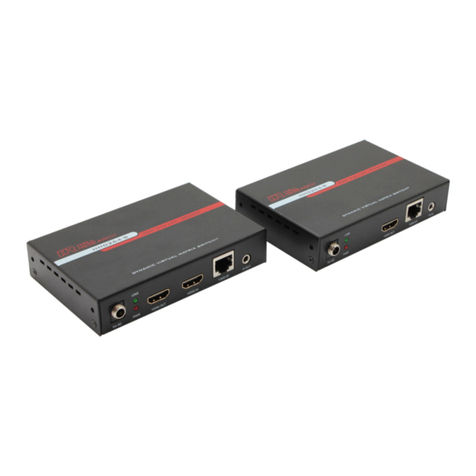
GA-over-UTP
In general, you should connect the power supply to the Sender unit.
However, follow these suggestions for best performance.
• If the sender has more than one RJ45 output (UV2-S, UV4-S,
UV8-S), then the power supply must be connected to the
sender.
• If the Sender is a Model UV1-S, UV1-SL, or UV1-S-WP,
where the system is comprised of only one sender and one
receiver, then you can plug the power supply at either the
sender or the receiver.
Wallplate Power Connection.
The wall plate units, UV1-S-
WP and UV1-R-WP have a 2
pin screw terminal for power
connection. The power supply
output cord does not have a
connector at its end; instead, it
is stripped and tinned. The
positive side has a white line
running along the insulation of
the cable and is marked.
The connection is polarized, meaning the you must connect the +
output wire to the + screw terminal and – to –.
You can use 20 gage or heavier wire to extend the DC output cord of
the power supply if you need to locate the power supply farther from
the device. It is recommended to keep the distance of the supply from
the unit to within 30 feet.
Note: Please do not connect the power supply to the AC source until
you have securely connected the output cords to the Wall Plate Mini-
Cat unit.
E. Apply a video source to the system and check for an image at each
receiver, then set the compensation Potentiometer (pot) for best
possible image.






























